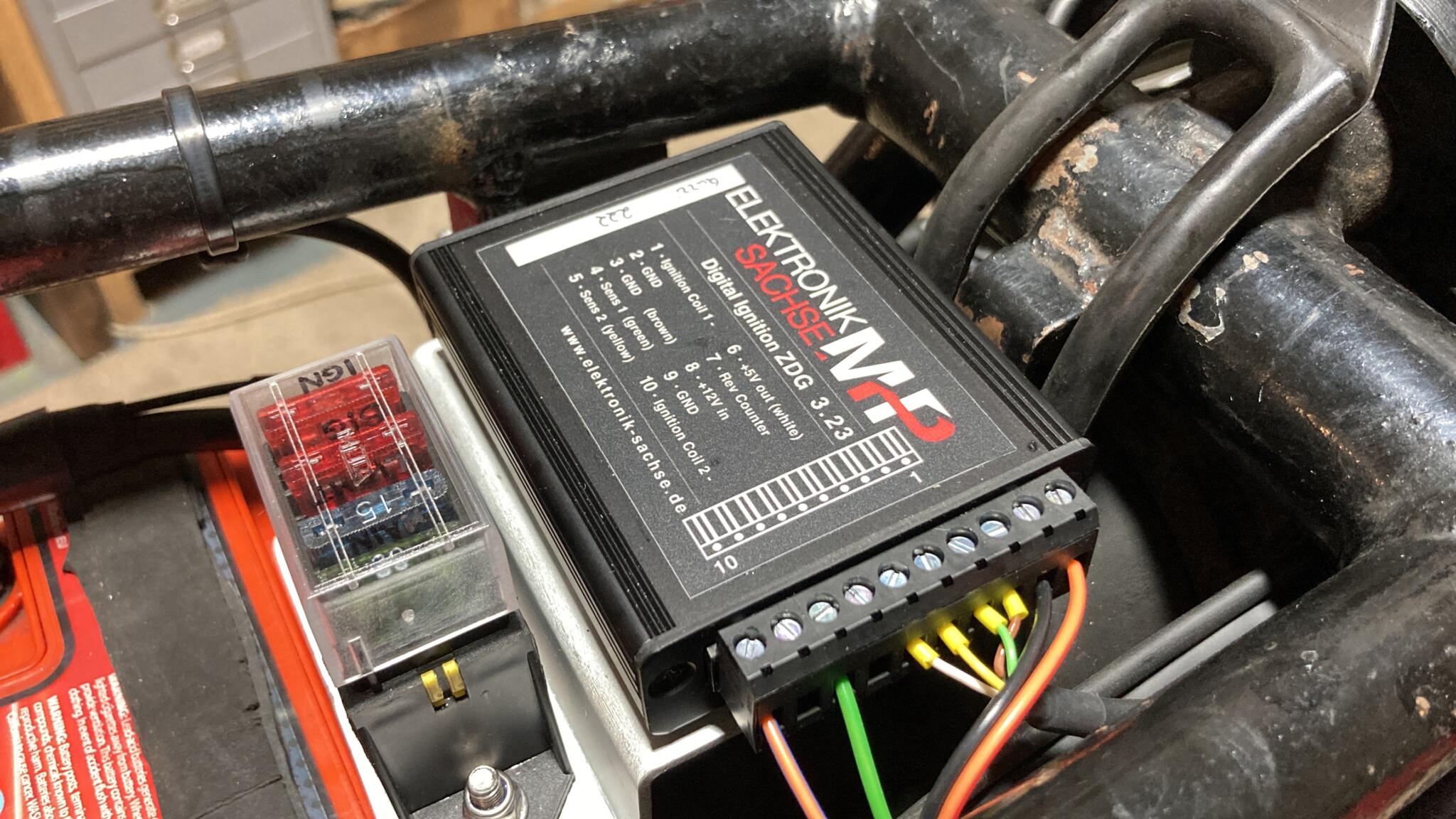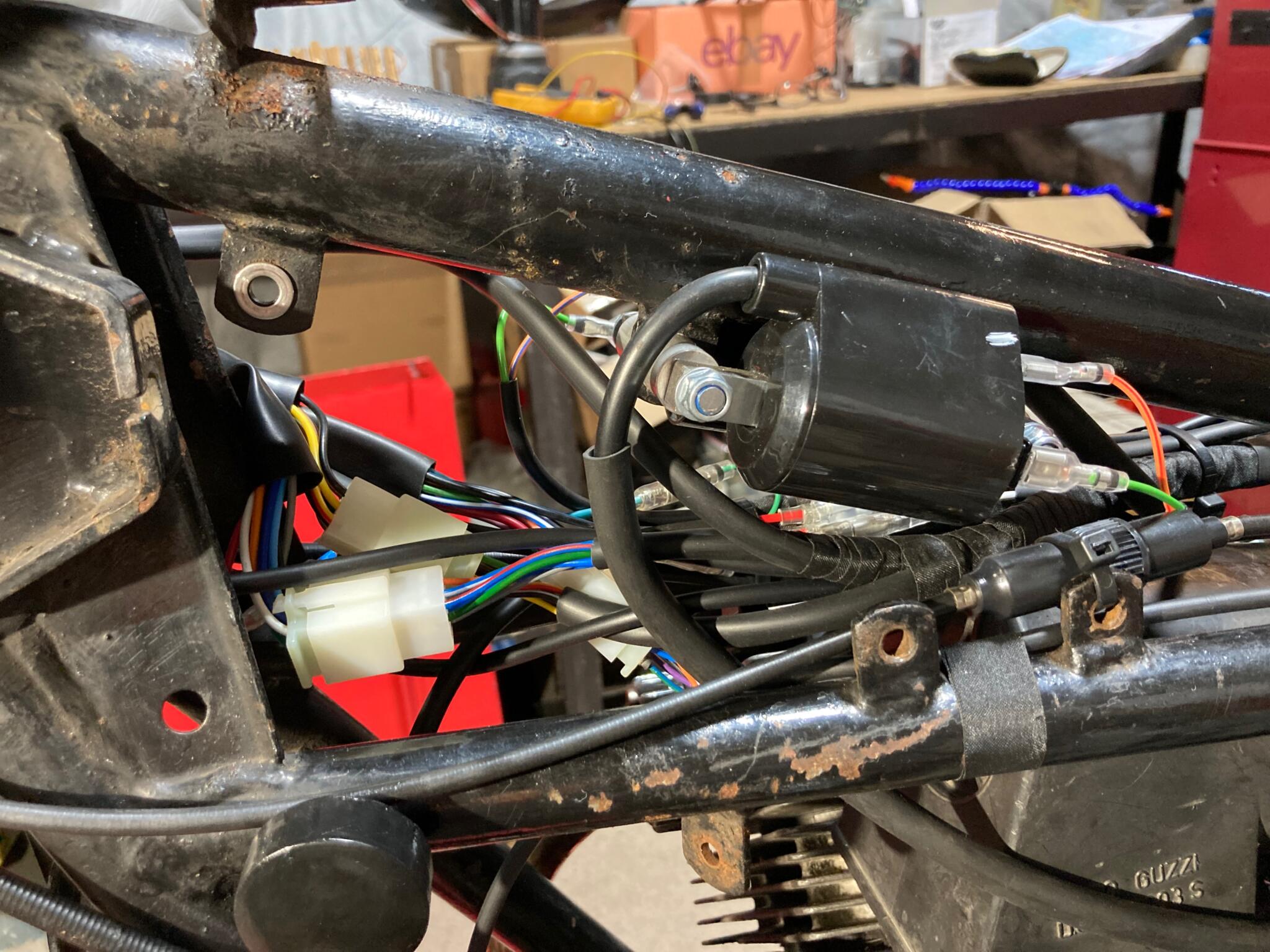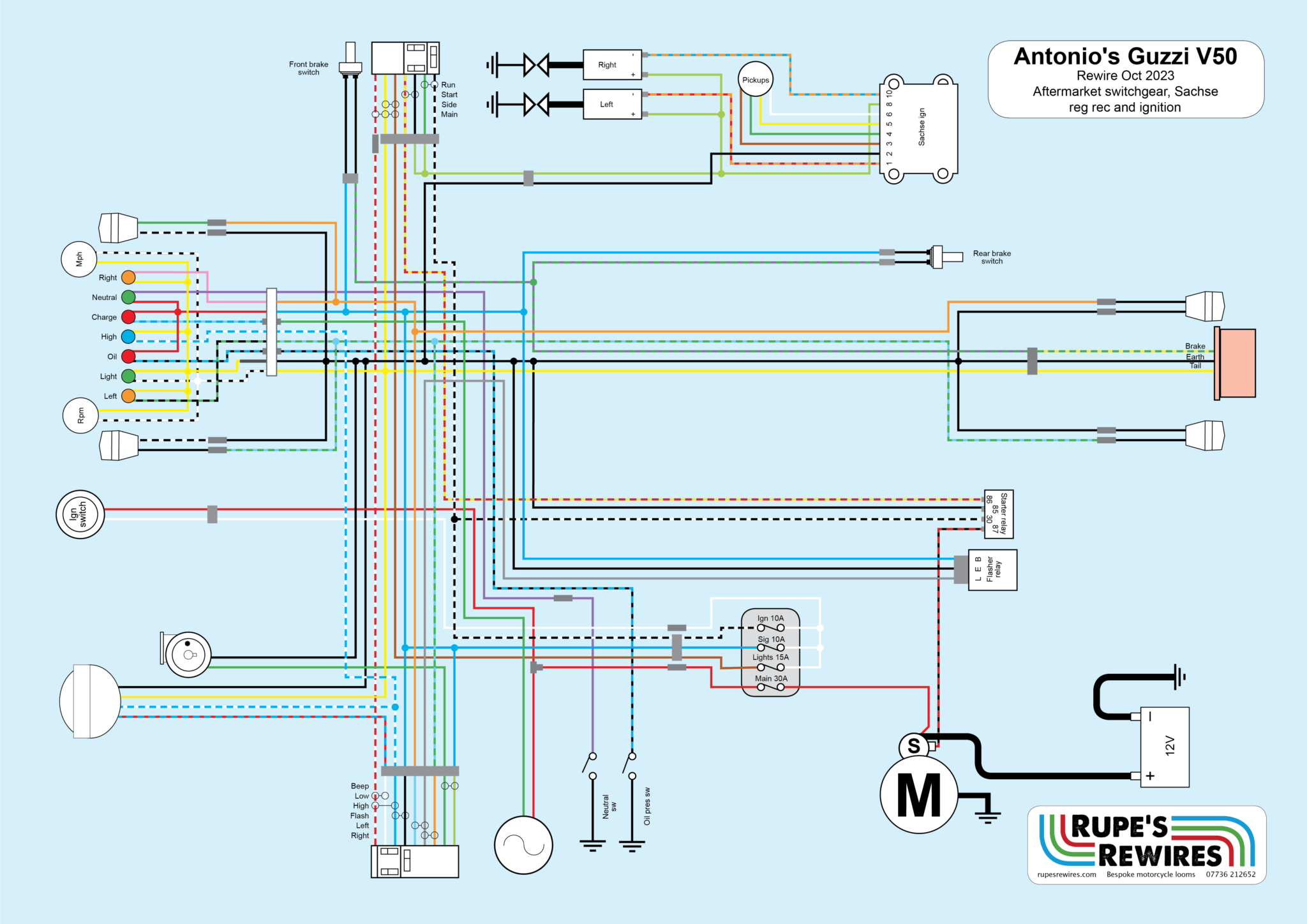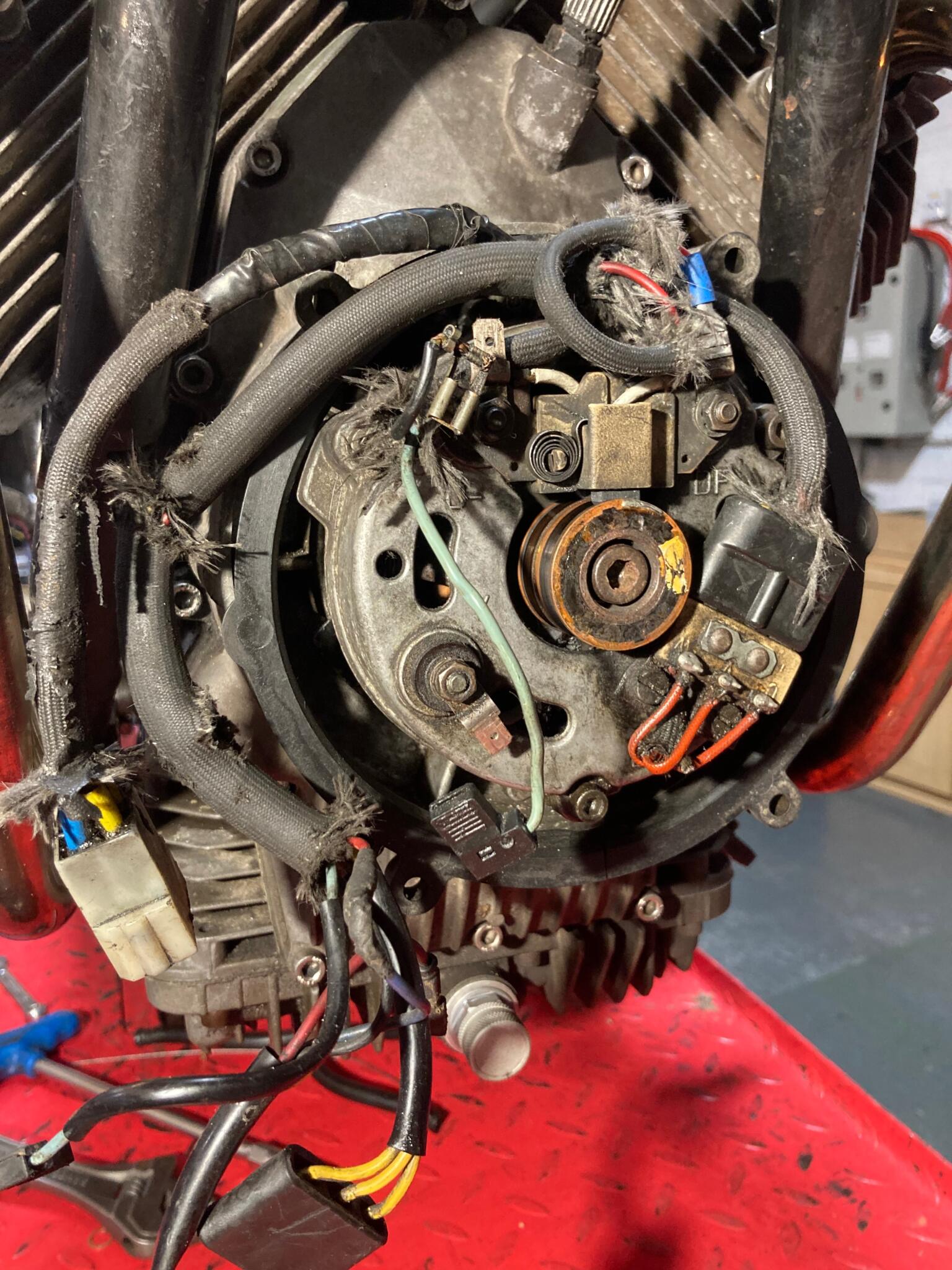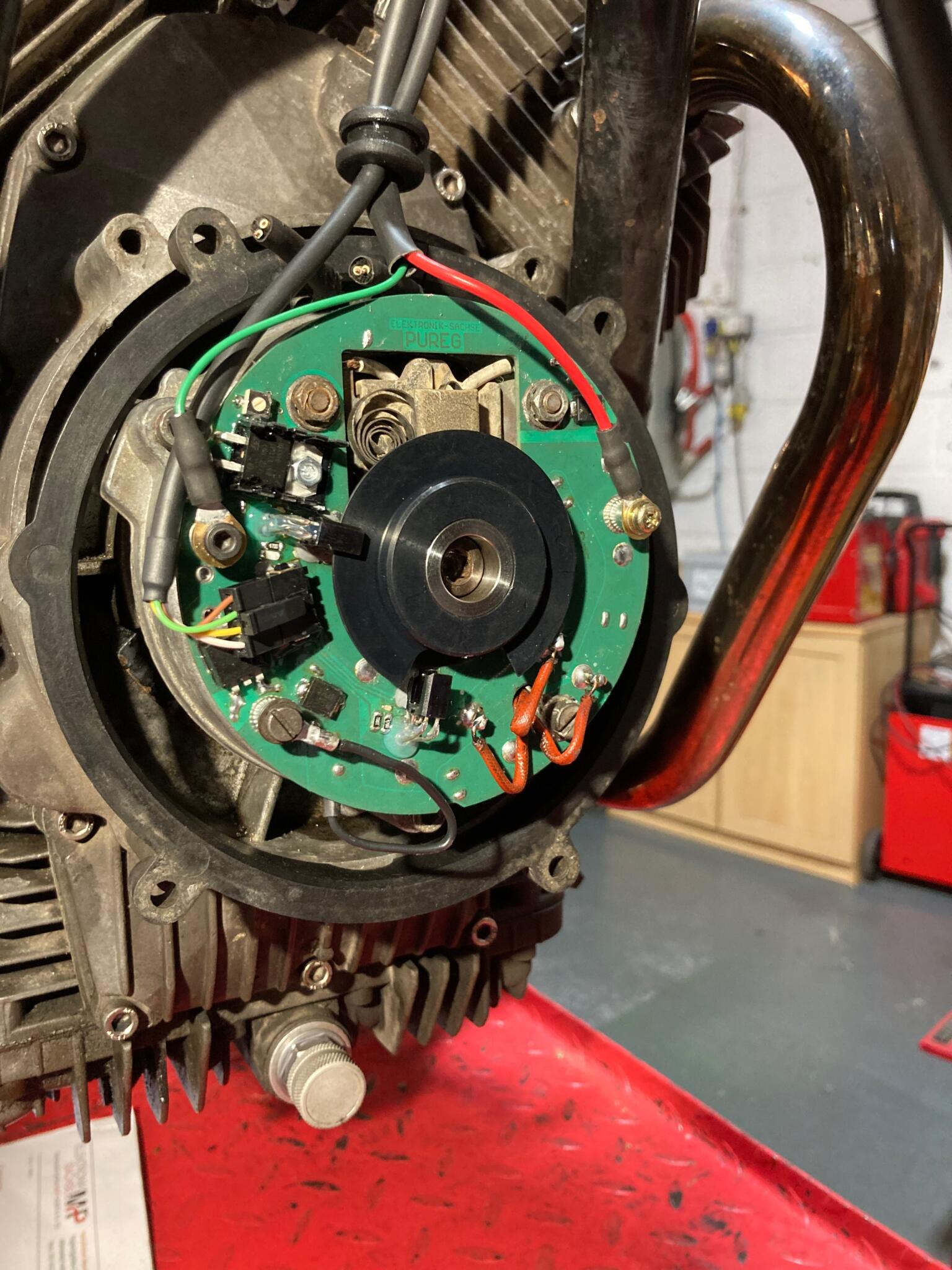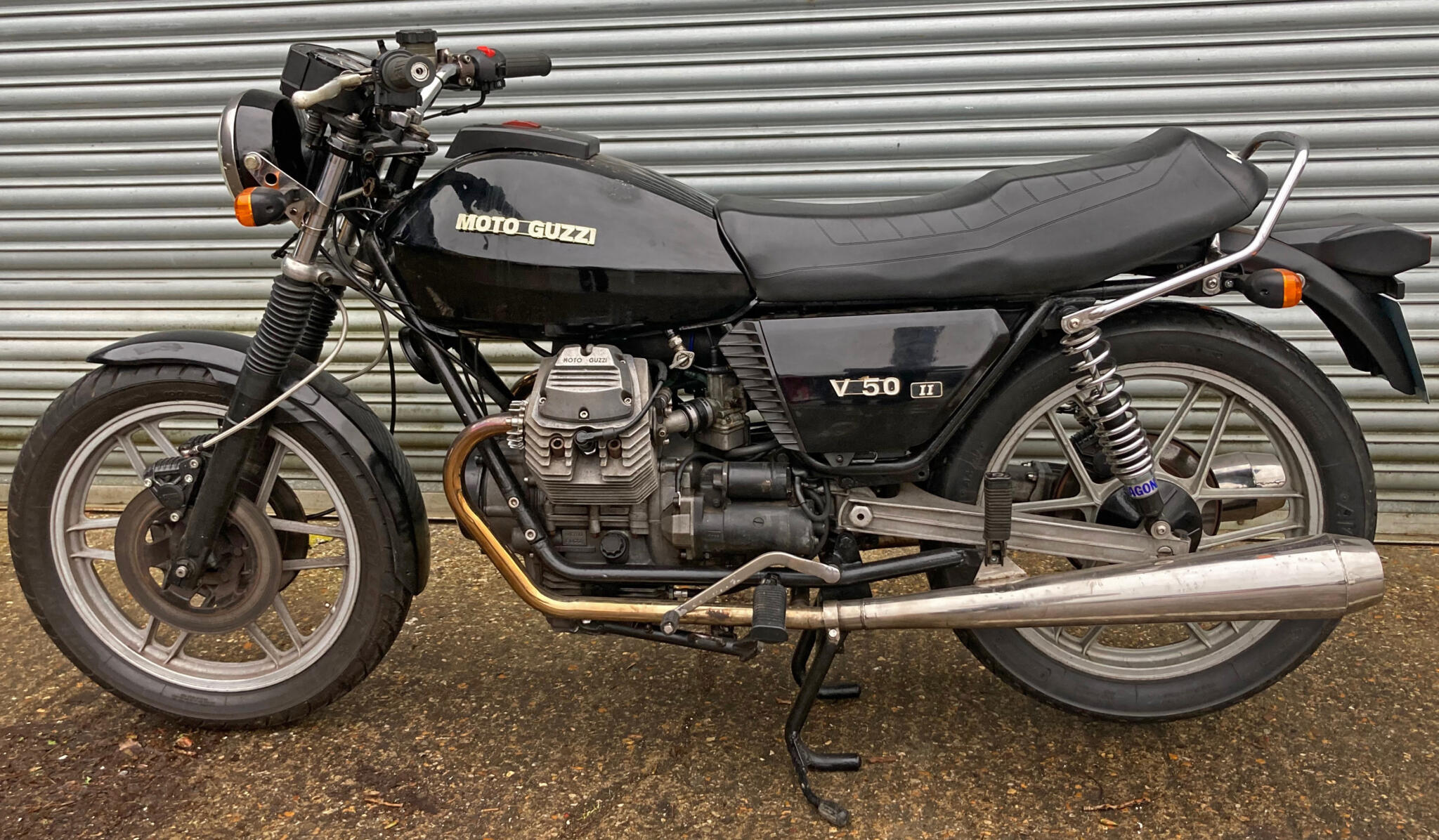
The brakes were originally linked, 1980s style. But now they are separate, using master cylinders from a 1980s Yamaha
Antonio’s Guzzi V50
Describing everything that happened to this Guzzi during its four-month stay in the workshop would take a long time. Describing everything that happened to it before that point would take even longer.
Suffice to say it needed plenty of work: cleaning, fitting new brake lines, replacing the airbox, rejetting the carbs; making up new fuel lines, and throttle and choke cables; adding new switchgear, swapping rear mudguards, revising the riding position… And popping on a new custom loom with a Sachse ignition/alternator system.
Normally the loom is not too much trouble, but in this case one of the ignition triggers on the Sachse was duff. Getting it replaced by the factory in Germany took months. Sachse said most of that time was spent with the package stuck in German customs. Another Brexit benefit, then.
It’s a good ignition system, using optical pickups and a chopper disc. There’s also a voltage regulator to replace the Guzzi original. You can adjust the charging voltage between 13 and 15V. I left it at 13.7V, which is fine.
The new handlebar switches are much better than the Guzzi originals, which famously resembled Monopoly houses and hotels. And after an epic wait, Antonio will finally be able to enjoy the bike.

